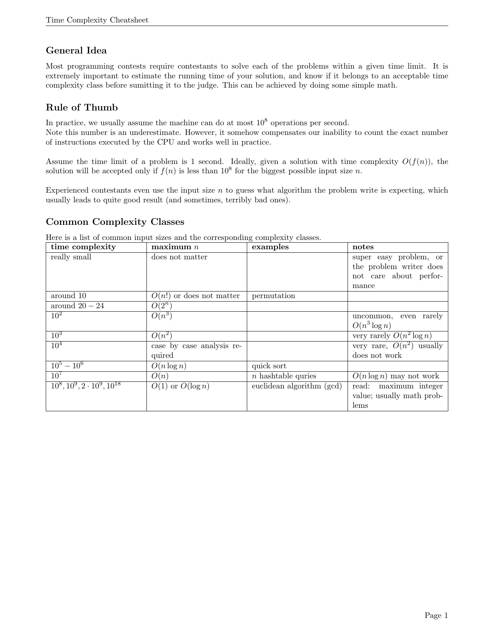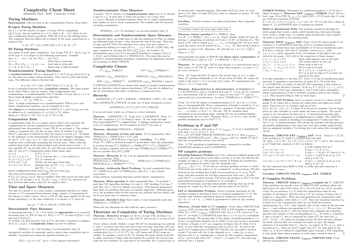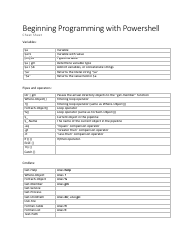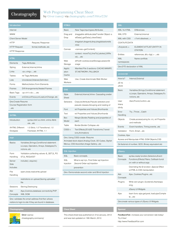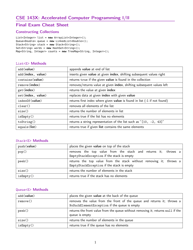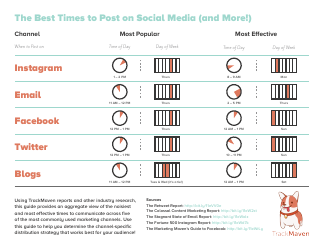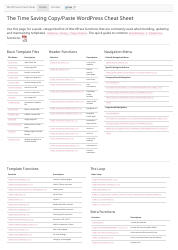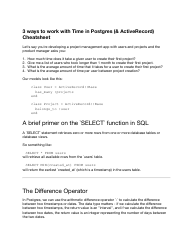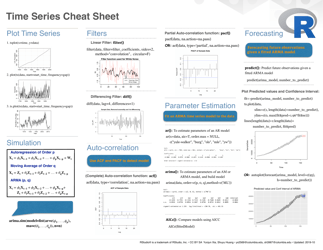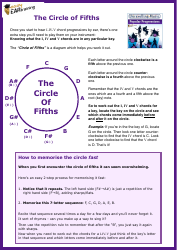Programming Time Complexity Cheat Sheet
The Programming Time Complexity Cheat Sheet is a document that provides a summary of the time complexity of various common operations and algorithms in computer programming. It helps developers understand the efficiency of different algorithms and make informed decisions when designing and implementing software.
FAQ
Q: What is time complexity?
A: Time complexity measures the amount of time an algorithm takes to run, usually as a function of the input size.
Q: What is Big O notation?
A: Big O notation represents the upper bound or worst-case scenario of an algorithm's time complexity.
Q: What is the time complexity of O(1)?
A: O(1) represents constant time complexity, meaning the algorithm takes the same amount of time regardless of the input size.
Q: What is the time complexity of O(n)?
A: O(n) represents linear time complexity, meaning the algorithm's time increases linearly with the input size.
Q: What is the time complexity of O(log n)?
A: O(log n) represents logarithmic time complexity, meaning the algorithm's time increases logarithmically with the input size.
Q: What is the time complexity of O(n^2)?
A: O(n^2) represents quadratic time complexity, meaning the algorithm's time increases quadratically with the input size.
Q: What is the time complexity of O(2^n)?
A: O(2^n) represents exponential time complexity, meaning the algorithm's time doubles with each additional input element.
Q: What is the best case time complexity?
A: The best case time complexity represents the minimum amount of time an algorithm takes to run.
Q: What is the worst case time complexity?
A: The worst case time complexity represents the maximum amount of time an algorithm takes to run.
Q: What is the average case time complexity?
A: The average case time complexity represents the expected amount of time an algorithm takes to run, averaged over all possible inputs.
